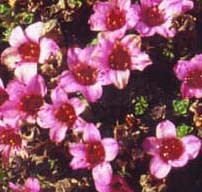A teaching puzzle
According to an email in my inbox the semester has officially started. Not that it makes much of a difference. With an intensive short course program in the summer and overlap between summer courses and semester courses the change is barely noticeable. But, the students who are going to stay here for the full semester have arrived, and classes have started.
I have spent most of my time the past week preparing for the course I will be running in the fall semester. It is broad and location dependent, but builds on knowledge from several sub-disciplines and covers a broad range of geological topics. The students have very different backgrounds. Some have only taken an introduction to geology course, while others are near completion of a B.Sc. degree. The overall outline of the course is established in the school curriculum and consists of a fieldtrip, lectures, weekly exercises and an independent project to be completed during the semester. Within this broad outline it is up to me to structure the content of field work, lecture and exercise activities and decide how and when to involve guest lecturers/ co-teachers.
Previously this course has been taught in a relatively traditional lecture format with lectures two-three times a week and a weekly exercise/lab. The individual projects have been literature review projects with presentations at the end of the semester. Two years ago when I was teaching here for six months while being on part-time leave from my postdoc. I developed a course that is now the “sister”-course to this one. The two courses have a very similar structure, but the one I developed two years ago has more field activities and a larger and more research intensive independent project. My goal has been to translate these ideas into the course I’m teaching now, while also keeping some of the elements that have traditionally been part of this course.
I have been struggling with finding a way to connect the field work they do on the excursion to a practical two-week project they carry out in groups and eventually to their own independent research projects. My goal is to make each part become a piece of the next, in a way where they will have an experience of a continuous practical activity running parallel to the more traditional classroom teaching throughout the semester. Most of the stratigraphy here is sedimentary basins, but some students may choose to work on tectonic/structural geology topics for their independent projects. I’m not sure I will manage to connect all the dots this year, but I’m going to outline some of the problems I see, and if anyone has ideas to how to handle any of these successfully your advice would be much appreciated.
The link from excursion to two-week practical project: What kind of data could be collected in limited time with a group of relatively inexperienced people, which will be useful for a larger two-week project concerning partly a different part of the stratigraphy?
We can spend a maximum of one day at each field site as one of the aims for the excursion is to see as much of the stratigraphy as possible, and we have a very good and expensive logistics solution that allows us to move around. They will get to visit a couple of localities with rocks of the same age as they will be working with in the practical project, but with a different position within the basin. I am not sure they will be able to describe enough rock record during a one day stop to be able to do some good comparisons, though.
The link from two week practical project to independent research project: How can a bulk of data collected and processed as group work be separated and distributed into different independent projects. Here I am really lost. I think it would be a good idea if at least some of the independent projects could build on and expand the work they get started during the practical project weeks, but am not able to estimate how this could be done or how many projects there would be basis for doing. I am also not sure how to connect these two parts for those who choose different topics for their independent project.






